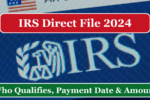Discover the Dividend Tax Rates for 2024: Learn about the UK dividend tax rates and how much you will need to pay. Dividends are taxed based on corporate profits and are not subject to personal allowances. The taxable amount is determined by the Dividend Tax Rates set by the Internal Revenue Agency.
Table of Contents
What is Dividend Tax?
Dividend tax is a tax on the payments you receive from owning shares in a company. If your dividend income exceeds your dividend allowance, you’ll need to pay tax at the applicable dividend tax rates.
As a shareholder, you receive a portion of the company’s profits. The company first pays corporation tax on its profits, and then distributes some of the remaining profits as dividends. You are then required to pay tax on these dividends according to your income tax band.
| 5600 Month July 2024 |
| 3600 Centrelink Bonus Coming In July |
| 98770 Allowance Australia July 2024 |
| New Bill Increasing Social Security Checks In Us |
| Dsp 1682 80 Payment Dates 2024 |
Dividend Tax Rates 2024
Changes in dividend taxation significantly impact investors, business owners, and company directors. The reduction in the dividend allowance has increased tax pressure on investors, leading some to reconsider their investments. Let’s explore alternative solutions that shareholders might consider.
Companies must pay taxes on their profits after submitting their Corporate Tax returns. While dividends are not considered business expenses, they must be paid regularly. For 2024, the dividend tax rate will be 8.75% for amounts ranging from £12,570 to £50,270.
To mitigate the impact of dividend taxes, investors can create a portfolio that lists their dividends and any associated investment schemes. This approach helps in managing and potentially reducing the taxable amount.
How to Pay Corporation Tax?
Every registered business in the UK is required to pay corporate tax and file a tax return for each financial year. This allows the UK Government to maintain accurate financial records.
Payments should be made to HM Revenue and Customs (HMRC). Taxpayers can file their returns either by phone or online. Payment details are typically confirmed within three days of submitting the tax return.
What Are the UK Dividend Tax Rates?
The Director of the company must declare the dividend by including details such as the company name, dividend date, shareholder information, and the total amount. This information must be recorded in the company’s records.
| Income Tax Bands | ||
| Rate | 2024-24 Tax Rate | 2024-25 Tax Rates |
| Basic | £1 to £37,700 | £1 to £37,700 |
| Higher | £37,701 to £125,140 | £37,701 to £125,140 |
| Additional | Over £125,140 | Over £125,140 |
| Income Tax Rate | 2024-25 Tax Rate | |
| Basic | 20% | |
| Higher | 40% | |
| Additional | 45% | |
The table above outlines the revised income tax bands and rates for the financial year 2024 to 2025. Additionally, the dividend rates for corporations are detailed in the following table.
| Dividend Rates | ||
| Rate | 2024-25 Tax Year | |
| Ordinary | 8.75% | |
| Upper | 33.75% | |
| Additional | 39.35% | |
The taxable rates for corporations remain the same as they were in 2024. Directors should ensure they enter the correct financial statements.
Decline in the Dividend Allowance UK
For the 2024-25 tax year, the Dividend Allowance was £1,000, but it has since been reduced to £500. This reduction reflects a decline in shareholder profits, indicating that companies need to improve their market value. Previously, the dividend allowance was £5,000 for the 2018-19 fiscal year, but it was cut to £2,000 and later to £1,000.
Investors are now faced with the challenge of evaluating stocks, financial assets, and the profitability of companies they consider investing in. A decline in gains makes it more difficult for them to justify continued investment.
Ways to Avoid Dividend Tax
There are several tools investors can use to minimize their annual tax rate. Some of these options are discussed below:
- Venture Capital Trusts (VCTs): Investments in small businesses or startups can benefit from tax advantages through VCTs. These trusts offer reduced or zero tax on gains for qualifying investments in growing companies.
- Small Self-Administered Schemes (SSAS): SSAS is a pension scheme for company directors that helps investors minimize their tax liabilities.
- Enterprise Investment Scheme (EIS) and Seed Enterprise Investment Scheme (SEIS): These schemes provide tax benefits for investments in startups. They help investors avoid taxable amounts by supporting companies that are focused on financial stability.
- Individual Savings Accounts (ISAs): Contributions to ISAs allow investors to save on capital gains and other taxes, providing a tax-efficient way to manage investments.
These are some strategies that investors can use to address losses they have incurred in past financial years.
Conclusion
Dealing with dividend tax in the UK doesn’t have to be complicated. By understanding the allowances, rates, and calculation methods, you can manage your taxes effectively and avoid surprises at tax time.
Remember, the first £500 of your dividend income is tax-free due to the dividend allowance. Beyond this threshold, the rate you pay depends on your income tax band. Keep detailed records, plan ahead, and don’t hesitate to seek professional advice if needed.
With this information, you’re well-equipped to handle dividend taxes in the UK with confidence. Here’s to successful investing and hassle-free tax returns!
FAQs
How can I reclaim tax overpaid on dividends?
If you think you’ve overpaid tax on your dividends, you can claim a refund by filing a Self-Assessment tax return or contacting HMRC directly. Be sure to provide comprehensive details and evidence of the tax paid and the income received.
What records should I keep regarding dividend payments?
You should retain all dividend vouchers, statements, and transaction records that show the amount of dividends received and the tax paid. These records should be kept for at least five years after the 31 January deadline for the relevant tax year.




